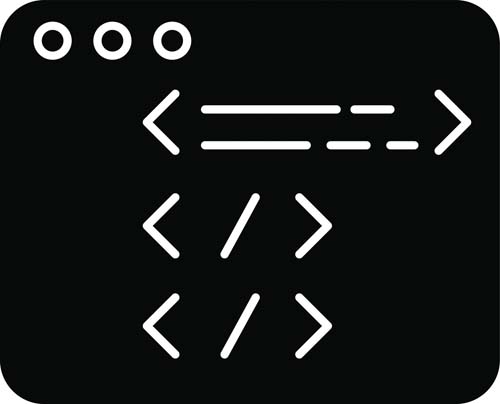推荐答案
Map是Java中常用的数据结构,它用于存储键值对的集合。通常情况下,Map并不保证元素的顺序,即插入顺序和迭代顺序不一定相同。如果希望按照特定的规则对Map进行排序,可以使用一些技术和工具来实现。
首先,理解Map的排序规则很重要。在Java中,Map的排序是基于键(Key)的。当我们使用TreeMap时,默认情况下会根据键的自然顺序进行排序。如果键是字符串,排序将按字典顺序进行;如果键是数字,排序将按升序进行。这是由TreeMap内部的红黑树数据结构所决定的。
要按照Map的值(Value)进行排序,我们可以使用两种方法:
1.将Map的Entry对象转换为List,然后使用Collections.sort()方法来排序。
2.使用Java 8引入的流(Stream)和Comparator来对Entry进行排序。
以下是使用这两种方法的代码示例:
方法一:使用Collections.sort()方法进行排序
import java.util.*;
public class MapSortingExample {
public static void main(String[] args) {
Map map = new HashMap<>();
map.put("Alice", 25);
map.put("Bob", 30);
map.put("Charlie", 20);
List> entryList = new ArrayList<>(map.entrySet());
// 使用Collections.sort()方法进行排序
Collections.sort(entryList, new Comparator>() {
@Override
public int compare(Map.Entry entry1, Map.Entry entry2) {
return entry1.getValue().compareTo(entry2.getValue());
}
});
// 打印排序结果
for (Map.Entry entry : entryList) {
System.out.println(entry.getKey() + ": " + entry.getValue());
}
}
}
方法二:使用流(Stream)和Comparator进行排序
import java.util.*;
public class MapSortingExample {
public static void main(String[] args) {
Map map = new HashMap<>();
map.put("Alice", 25);
map.put("Bob", 30);
map.put("Charlie", 20);
// 使用流(Stream)和Comparator进行排序
map.entrySet().stream()
.sorted(Map.Entry.comparingByValue())
.forEach(entry -> System.out.println(entry.getKey() + ": " + entry.getValue()));
}
}
无论使用哪种方法,都需要实现比较器(Comparator)来定义按照值进行排序。比较器会根据Map的值进行比较,并返回比较结果。排序结果会影响输出顺序,从而实现按照值排序的需求。
其他答案
-
Map是一种常见的数据结构,它按照键值对的方式存储数据。在默认情况下,Map是无序的,不保证插入或添加的顺序。如果需要对Map进行排序,我们可以通过以下方法实现排序规则。在Java中,可以使用TreeMap或使用Collections.sort()进行排序。
首先,要理解Map的排序规则。Map的排序是基于键(Key)进行的。默认情况下,Map按照键的自然顺序进行排序。如果键是字符串,将按照字典顺序进行排序;如果键是数字,将按照升序进行排序。但是,如果我们希望按照值(Value)进行排序,就需要自定义排序规则。
方法一:使用TreeMap排序
import java.util.*;
public class MapSortingExample {
public static void main(String[] args) {
Map map = new HashMap<>();
map.put("Alice", 25);
map.put("Bob", 30);
map.put("Charlie", 20);
// 使用TreeMap进行排序
TreeMap sortedMap = new TreeMap<>(new ValueComparator(map));
sortedMap.putAll(map);
// 输出排序结果
for (Map.Entry entry : sortedMap.entrySet()) {
System.out.println(entry.getKey() + ": " + entry.getValue());
}
}
// 自定义比较器,按照值进行比较
private static class ValueComparator implements Comparator {
private final Map map;
public ValueComparator(Map map) {
this.map = map;
}
@Override
public int compare(String key1, String key2) {
Integer value1 = map.get(key1);
Integer value2 = map.get(key2);
return value1.compareTo(value2);
}
}
}
在上述示例中,我们定义了一个ValueComparator类作为TreeMap的比较器。该比较器根据值进行比较。然后,我们将原始的Map复制到TreeMap中,并打印排序结果。
方法二:使用Collections.sort()进行排序
import java.util.*;
public class MapSortingExample {
public static void main(String[] args) {
Map map = new HashMap<>();
map.put("Alice", 25);
map.put("Bob", 30);
map.put("Charlie", 20);
// 将Map转换为List
List> entryList = new ArrayList<>(map.entrySet());
// 使用Collections.sort()进行排序
Collections.sort(entryList, new ValueComparator());
// 输出排序结果
for (Map.Entry entry : entryList) {
System.out.println(entry.getKey() + ": " + entry.getValue());
}
}
// 自定义比较器,按照值进行比较
private static class ValueComparator implements Comparator> {
@Override
public int compare(Map.Entry entry1, Map.Entry entry2) {
return entry1.getValue().compareTo(entry2.getValue());
}
}
}
在上述示例中,我们将Map的Entry对象转换为List,并使用Collections.sort()方法对List进行排序。同时,我们定义了一个ValueComparator类作为比较器,用于按照值进行比较。最后,我们输出排序后的结果。
-
当我们需要对Map进行排序时,可以使用TreeMap来实现。TreeMap是基于红黑树实现的有序映射,可以根据键(Key)的顺序进行排序。默认情况下,TreeMap按照键的自然顺序进行排序。如果我们想要按照其他规则进行排序,可以使用Comparator来定义排序规则。
以下是一个使用TreeMap实现对Map排序的示例代码:
import java.util.*;
public class MapSortingExample {
public static void main(String[] args) {
Map map = new HashMap<>();
map.put("Alice", 25);
map.put("Bob", 30);
map.put("Charlie", 20);
// 使用TreeMap进行排序
TreeMap sortedMap = new TreeMap<>(new ValueComparator(map));
sortedMap.putAll(map);
// 输出排序结果
for (Map.Entry entry : sortedMap.entrySet()) {
System.out.println(entry.getKey() + ": " + entry.getValue());
}
}
// 自定义比较器,按照值进行比较
private static class ValueComparator implements Comparator {
private final Map map;
public ValueComparator(Map map) {
this.map = map;
}
@Override
public int compare(String key1, String key2) {
Integer value1 = map.get(key1);
Integer value2 = map.get(key2);
return value1.compareTo(value2);
}
}
}
上述示例中,我们定义了一个ValueComparator类作为TreeMap的比较器。该比较器根据值进行比较。然后,我们将原始的Map复制到TreeMap中,并打印排序结果。通过使用TreeMap和自定义的比较器,我们可以实现对Map按照值进行排序的需求。
总结:以上是三种不同的方法来操作和实现对Map排序的规则。这些方法包括使用TreeMap,默认按照键的顺序排序;使用Collections.sort()进行排序,通过自定义比较器来实现按值排序;以及使用TreeMap和自定义比较器来按值排序。根据具体的需求和场景,可以选择适合的方法来实现对Map的排序操作。

























 京公网安备 11010802030320号
京公网安备 11010802030320号